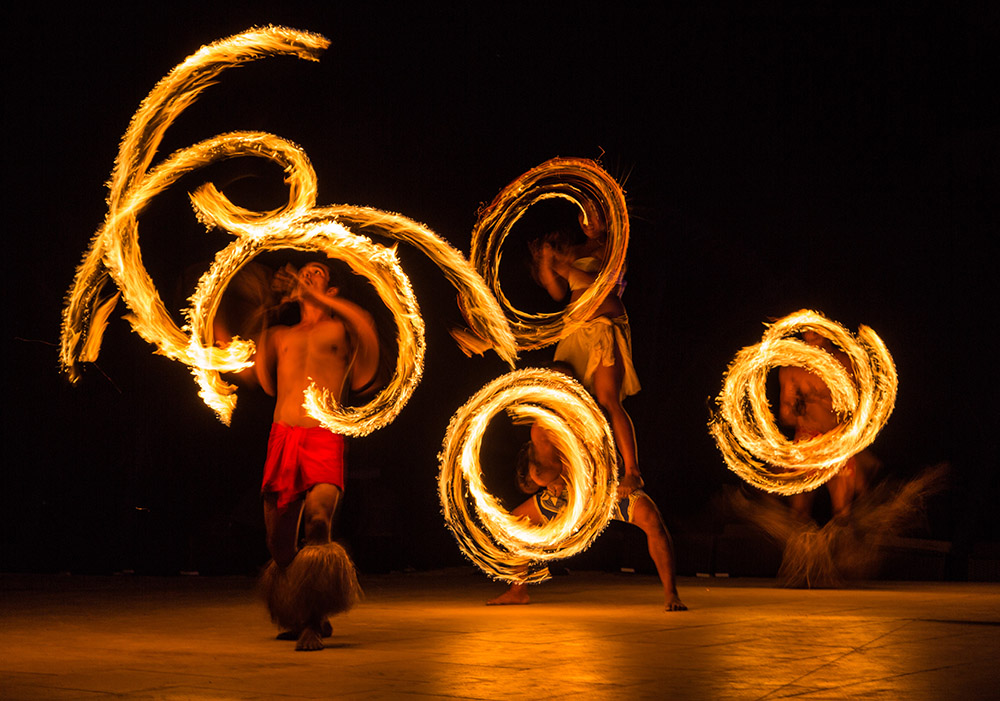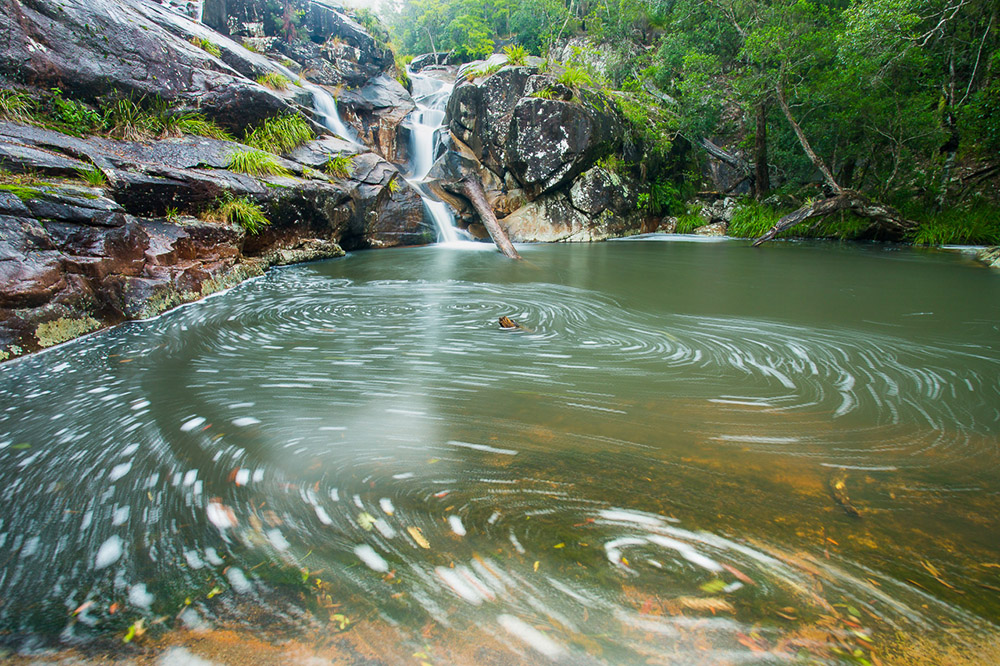What happens when you use a slow shutter speed?
Mostly we try to keep our shutter speed high enough so that we’re not introducing blur or camera shake into our images.
There are times and places though when we want to show motion or produce a more creative image. Using a slower shutter speed can help us do this.
Slow fire-dancers in Fiji
I love photographing performers and this show was spectacular. I decided to use a very slow shutter speed of 0.4 sec (almost half a second) to capture the fire twirling and movement made by these fire dancers. When photographing something like this make sure you set your camera to shutter priority mode and then experiment with different shutter speeds throughout the performance. So much fun!
More tips for using a slow shutter speed
Whenever you want to create an image that shows motion, you’ll want to choose a slower shutter speed. This means the shutter is open for a longer period of time and will allow more light to expose your sensor (or film).
Be sure to use a tripod when you are using slower shutter speeds so that any areas you have in focus are sharp and only the areas you want to show motion are blurred (due to your shutter speed).
It’s also helpful to use a remote trigger or self-timer so you are not touching the camera which can also introduce movement that you don’t want. If you want everything in your scene in focus, set your aperture for f16 or above.
If you are looking to produce more creative images, using a slow shutter speed is one way you can do that. It can help you to capture those things we don’t always see, like the wind or movement of the waves. Slowing your shutter speed allows you to capture that movement by blurring the waving grass or swirls in the water.
Make sure your checkout my in-depth article The Ultimate Guide to Shutter Speed in Photography for more tips.
Bubble patterns (very slow shutter speed – long exposure)
This is what I love about landscape photography using Neutral Density (ND) filters, you can get super creative. Here I used a ND filter to darken the light coming into my camera which allowed me to slow down my shutter speed to 10 seconds which creates these really cool bubble patterns. Without the ND filter the slowest I can get my camera to go is about 1/2 second before my image becomes over-exposed and too light. Even closing down my aperture to f/22 doesn’t help. Sometimes I stack a neutral density filter (for long exposures) as well as a circularising filter to reduce the glare on the water too.
What settings do I need to use to show motion in my photographs?
This will vary depending on what you are photographing. Generally, if you want to show the movement of waves or a swirl of water, keep your shutter speed at 1/8th of a second or lower. In the examples below I’ve shown you exactly how I photographed these scenes to create the movement in the water.
Here is a list of how specific shutter speeds will affect a scene with moving water.
- ⅛ second slows the motion of the water but you’ll still see detail and movement, splashes and water drops.
- ½ second is a good mix of motion and stop action.
- 1 second will smooth out the water but will still show movement in the foreground (see image below)
- 4 seconds smooths the water out almost completely and creates ghosting of the movement
- 8 seconds will flatten out the water and create a smooth, smoke-like looking effect.
Slow shutter speed Niagara Falls
I shot this image with a slow 1 second exposure (yes a full 1 second). I used the snow and railing to steady my camera because I didn’t have a tripod with me. The night lights on the falls change colour every few seconds – I like this colour because it contrasts with the evening sky. Shot at f/8 aperture on a 30mm lens.
The Ultimate Guide to Shutter Speed in Photography

Related Articles
Did you enjoy this article? Check out these related articles, too:
- The Ultimate Guide to Shutter Speed in Photography
Shutter Speed and Photography: Everything You’ve Ever Wanted to Know - Rules For Shutter Speeds
Typical rules for using shutter speeds in photography - Using Shutter Speed to Break the Rules
How to break shutter speed rules and still create epic images!
Do This Now
Please leave me a comment below – I’d love to know what you think. Brent



